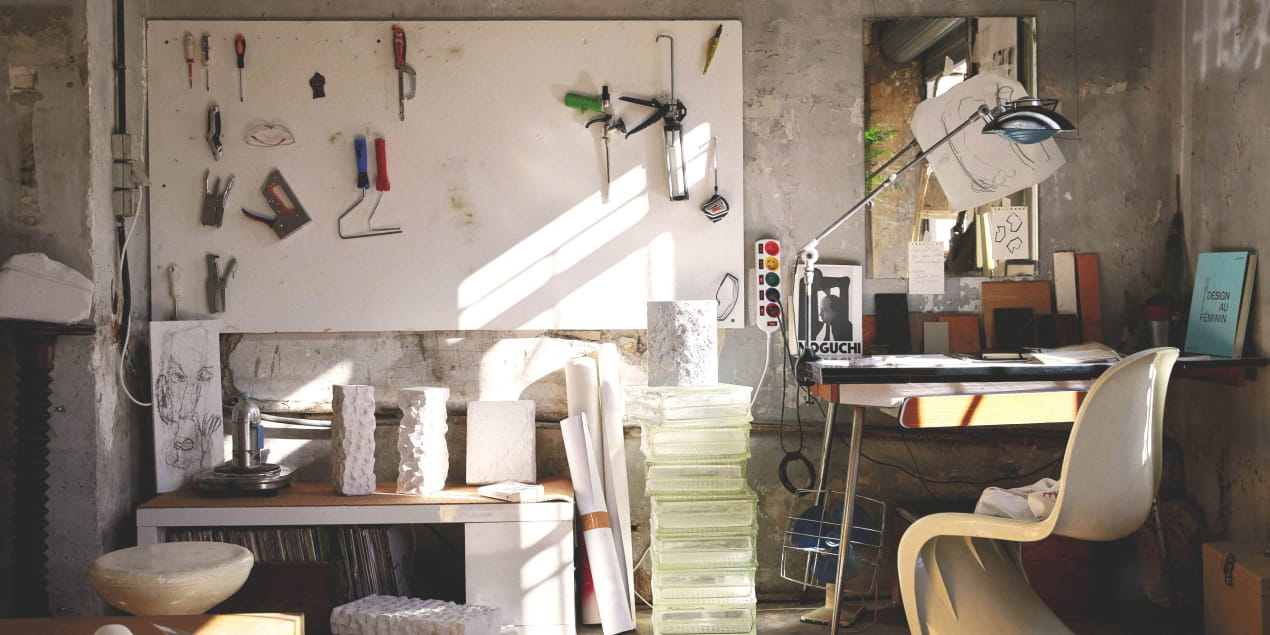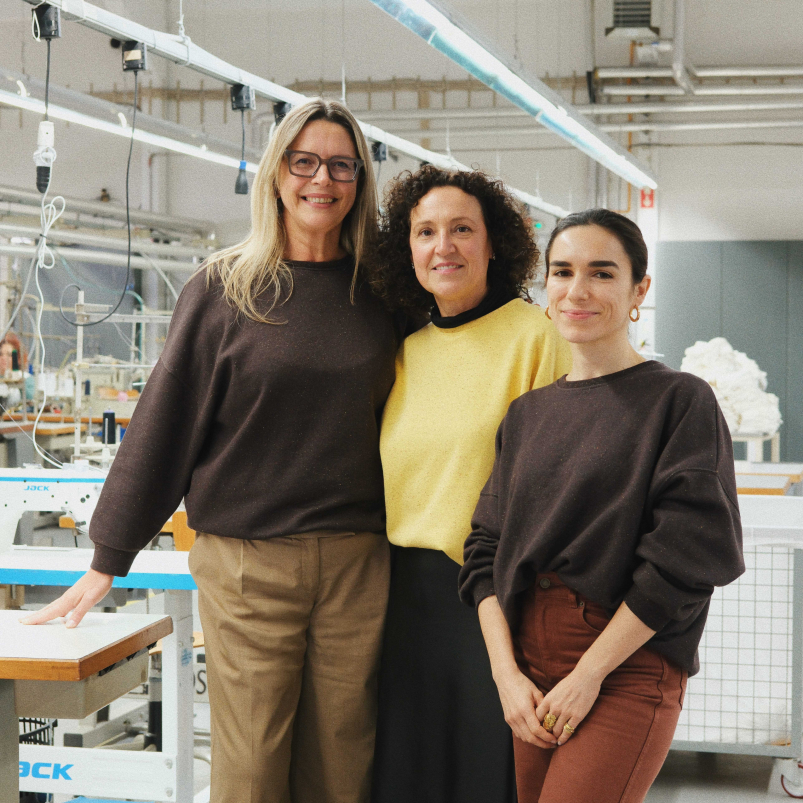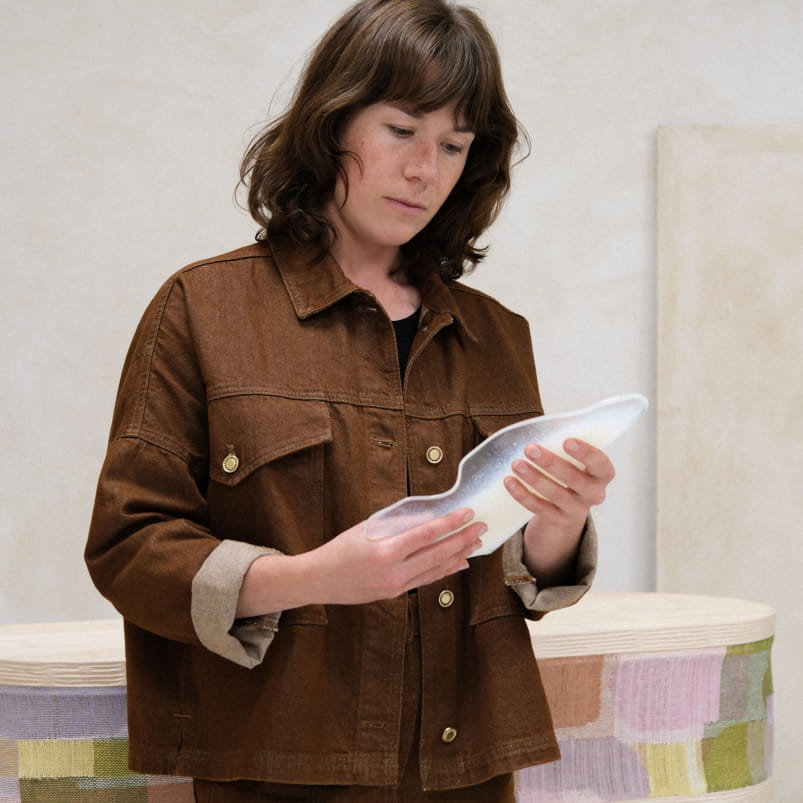CRÉDIT PHOTOS : Marina Germain
Architect and designer Capucine Guhur won first prize in the Sessùn Craft Prize for her La Récolte cocoon project, made of soft curves and natural materials. Launched in March 2023, the competition invited participants to imagine a cocoon-like space for our head office, designed to accommodate one or two people, where they could seclude themselves to rest or work. Inspired by theater, movement and image, Capucine chose to explore wood and straw for this project. A new stage in her creative journey.
You're a designer, interior architect, scenographer... Can you talk to us about your background?
I've always lived in an artistic environment, with my parents who were actors and my sister who was a film director. My attraction to the arts quickly became apparent. After a preparatory art course in Paris, I did a joint degree in interior architecture and design at the Camondo School in Paris. I then worked in an agency while developing my own projects in my studio on the side. I mainly worked in agencies run by women, such as Studio Perrier, Marine Bonnefoy and Marion Mailaender. Marion played an essential role in shaping my perception of space. Her free spirit allows her to transcend the boundaries of time. Since then, I've set up my own agency, and have developed projects in interior architecture, scenography and object design.
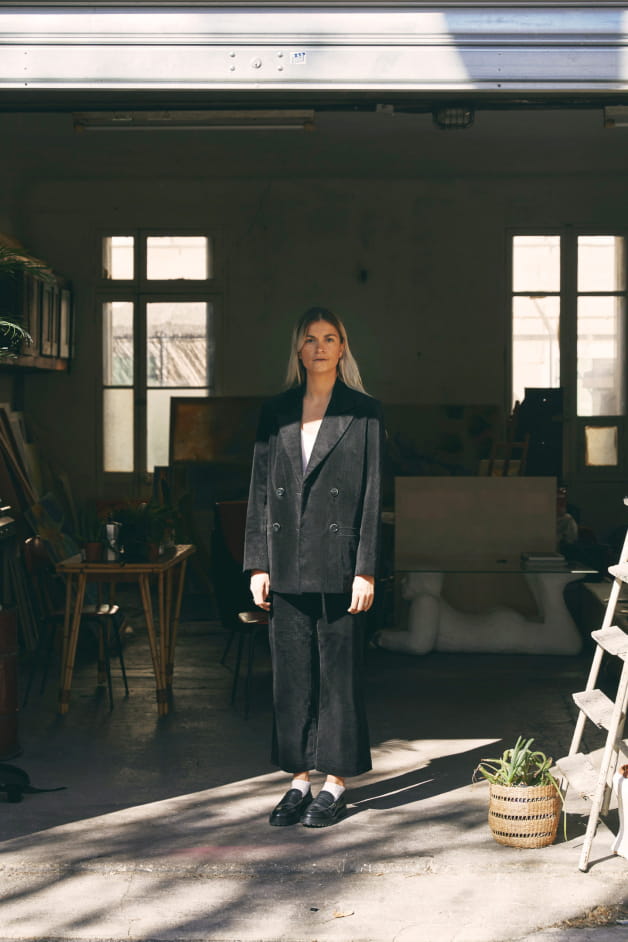
What attracted you to these disciplines? How important is it for you not to confine yourself to one discipline, but to make them interact?
I've always been drawn to places, the spaces that surround us, the stories they tell us. I always conceive my projects by closely combining object design and interior architecture. There's something obvious about combining the two disciplines to create a sensitive narrative. This is how I approach projects in their overall context.
You work between Marseille and Brittany, with one foot in Porto. How does this geographical distance impact your work?
I find it both rich and fortunate to share my life between these different places. They provide me with different sources of inspiration. Brittany being my native land, it's often where my projects originate. I love the strong nature of its raw landscapes and the traces of Celtic culture. In Porto, as in Paris, I find the effervescence of an artistic city both nourishing and inspiring. Marseille, meanwhile, draws its energy from a blend of Mediterranean and other cultures. As in Brittany, the presence of the sea is another source of creativity. In fact, that's where my studio is located.
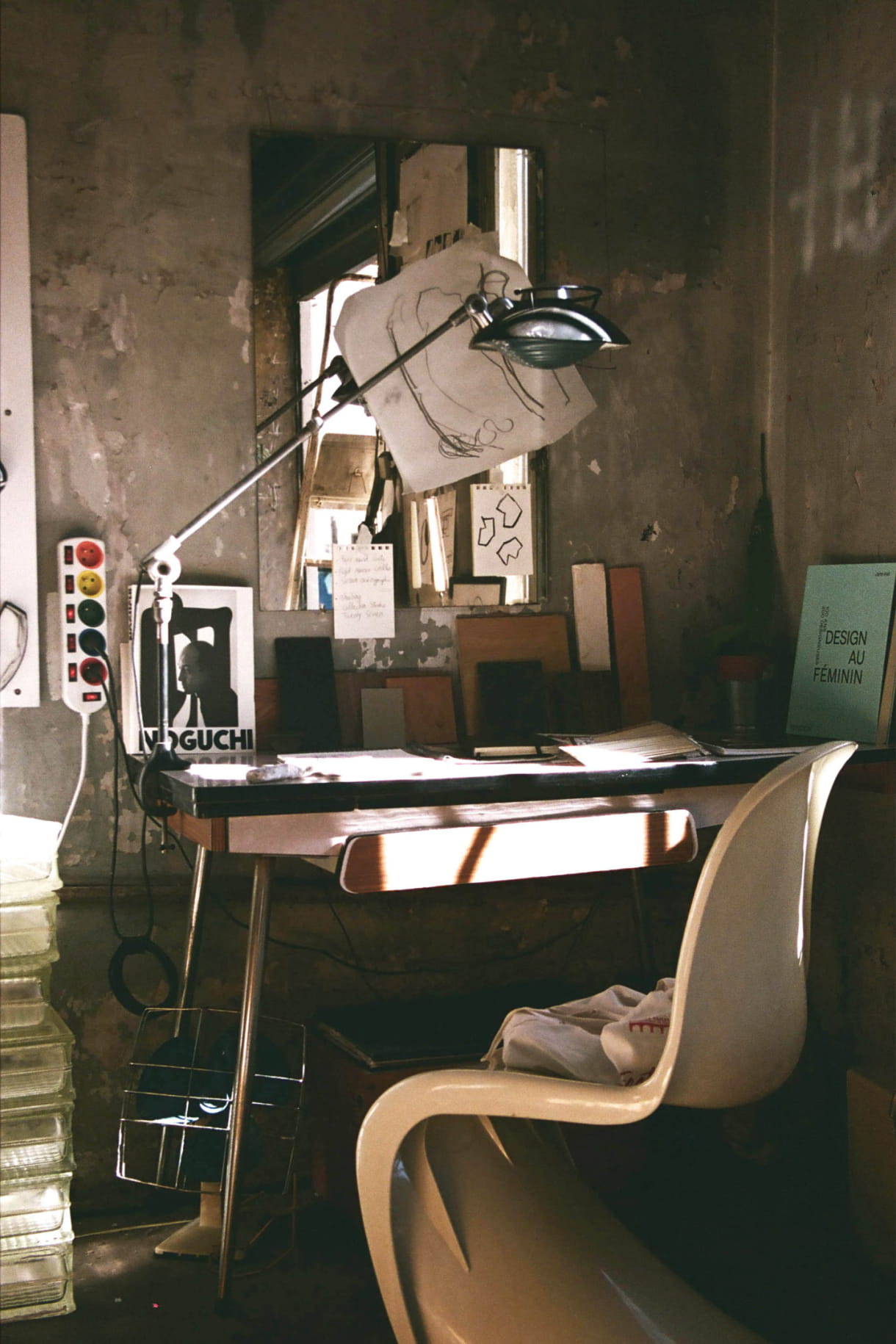
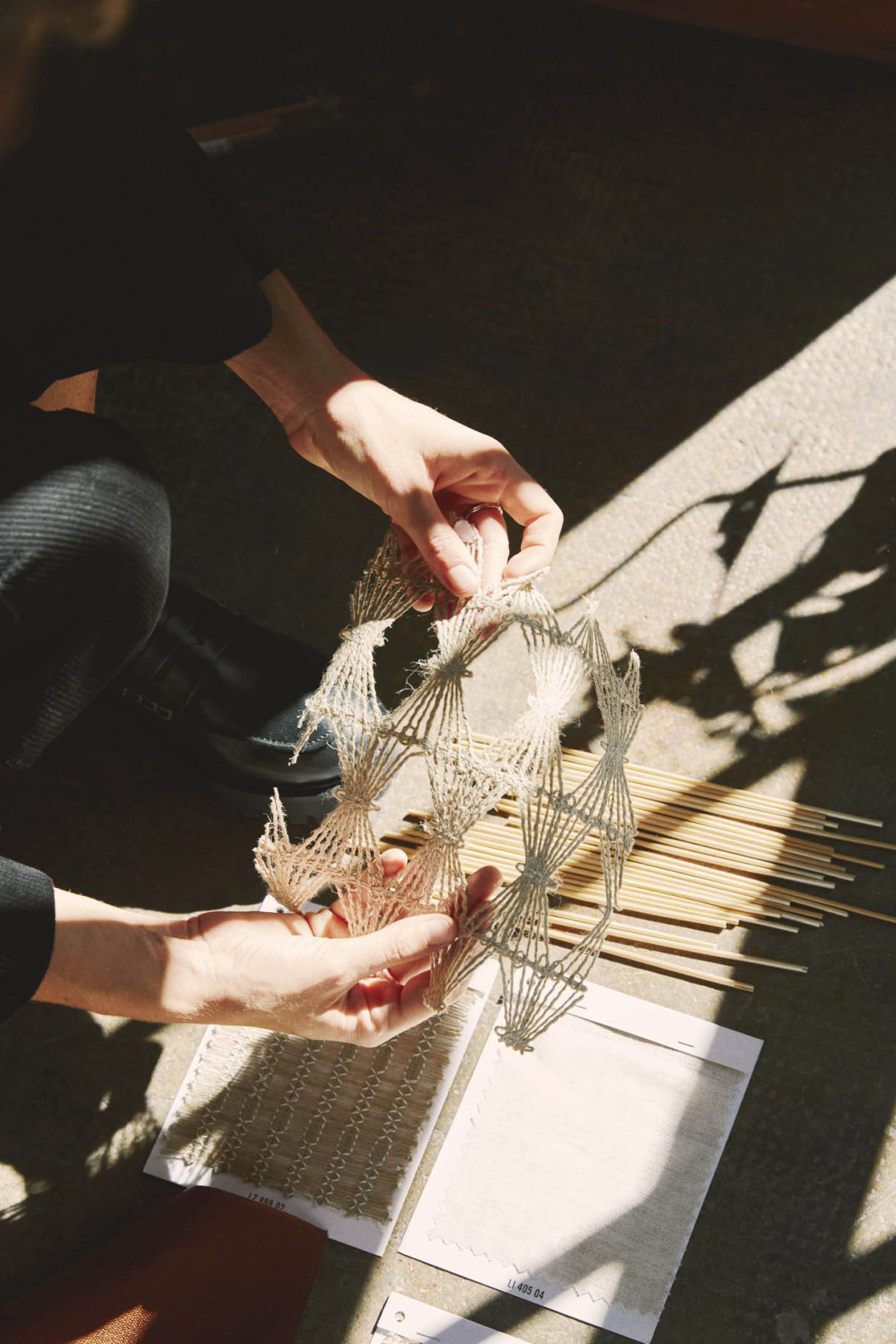
Which of your creations is the most emblematic of your work?
Designs often reflect a particular moment in our lives and our influences. But depending on creative license, some projects are more important than others. My project "Le dernier repas", exhibited for the 2021 Toulon Design Parade by the Villa Noailles, was a carte blanche of total creative freedom. Mythology has always inspired me a great deal, and this was an opportunity to talk about it not with words, but with space and objects. My set is a dining room, where Ulysses and Calypso had their last meal. It's a space I wanted to stage like a theatrical play that the actors have just completed, in a last breath, a tragedy. When the visitors enter the room, silence reigns, but the sound of voices is still in the air. The quarrel has broken out, and every object in the room still bears witness to the mythological altercation between Ulysses and Calypso. For me, places and objects carry stories and scenes of life that belong to them. I wanted a story to be at the root of my creative process, so I appropriated this episode from the Odyssey, since Greek mythology has the Mediterranean as its cradle. I imagined one of the rooms in which Calypso could have held Ulysses. I wanted the space and the furniture and objects, by their very appearance, to convey what had just taken place there. Each object in the room, spectator to the drama, is like something out of a tale, a myth, with a strange, mineral, even organic aspect.
What are your sources of inspiration?
My projects often have a timeless sense about them. I draw inspiration from antique or medieval lines, which I like to confront with a contemporary edge. This can start with a large table carved out of rock, throne-like chairs or porticos and drapes inspired by the tents of Roman warriors. I like to work with simple lines and I'm very sensitive to the strong presence of matter. My travels are also a great source of inspiration. I am particularly inspired by the work of scenographer Richard Peduzzi, for his timeless universe, and Carlo Scarpa, the architect of detail, not forgetting Vincenzo De Cotiis, the genius of materiality.
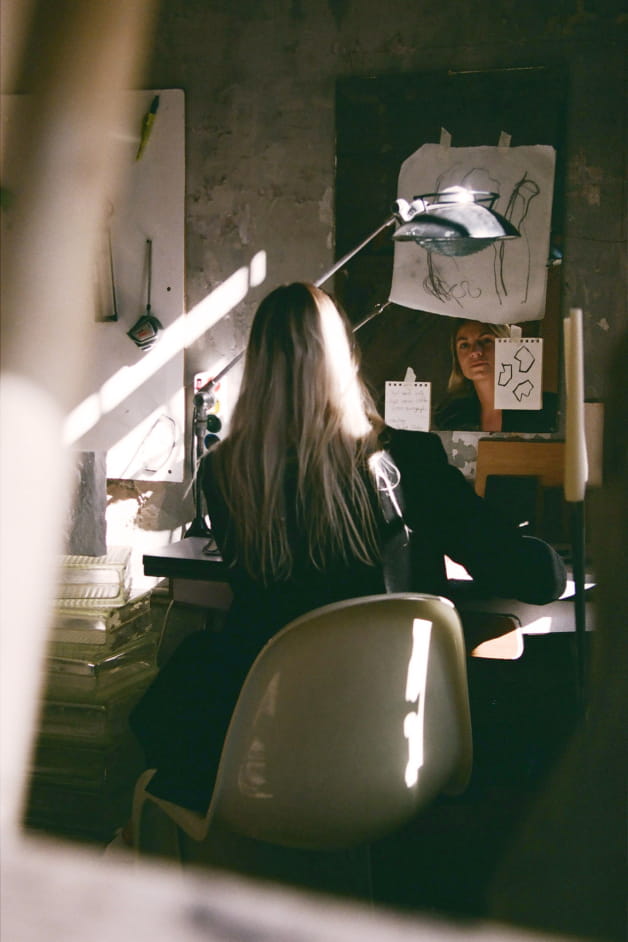
What role does theater play in your practice?
I've had a passion for movement and images ever since I was a child. Crossover between different art forms was the watchword at home. I've always had an attraction and a penchant for theater. It's essential for me to tell a story through my projects. I like to draw lines that have a timeless aspect, as if they could have come out of a fairy tale, which is perhaps what gives them a certain theatricality.
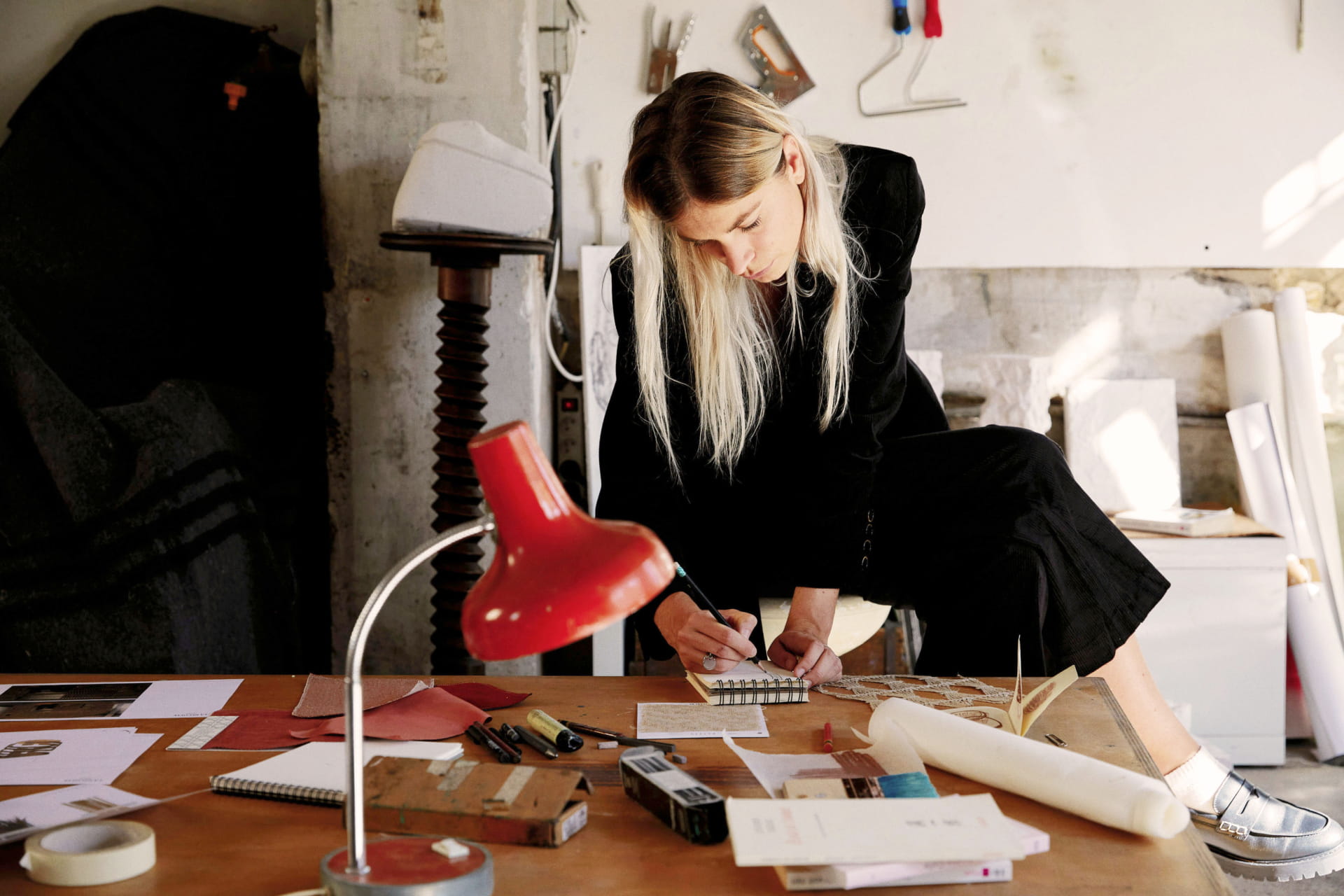
Do you have a ritual that accompanies your work?
My morning routine always starts with a good cup of tea and an inspiring playlist. As for my creative process, I invariably start by researching with charcoal drawings. I often proceed with the same method. The creative idea usually emerges very quickly, on the spur of the moment.
Which materials are you particularly fond of? How do you choose them?
I really love raw materials, and it's often hard for me to choose! I particularly appreciate the juxtaposition of raw materials with more luxurious ones. Stone and metal are recurring elements in my creations. However, each new project is an opportunity to discover new materials and master new skills. For example, the La Récolte / The Harvest project, designed for the Sessùn Craft Prize, marks my first foray into the use of straw. As a young interior architect and designer, it's vital to ask the question of sustainable development and the impact of architectural projects on our environment. For my part, I put a great deal of importance on working with local materials and craftsmen who are based in the region where the project is being developed.
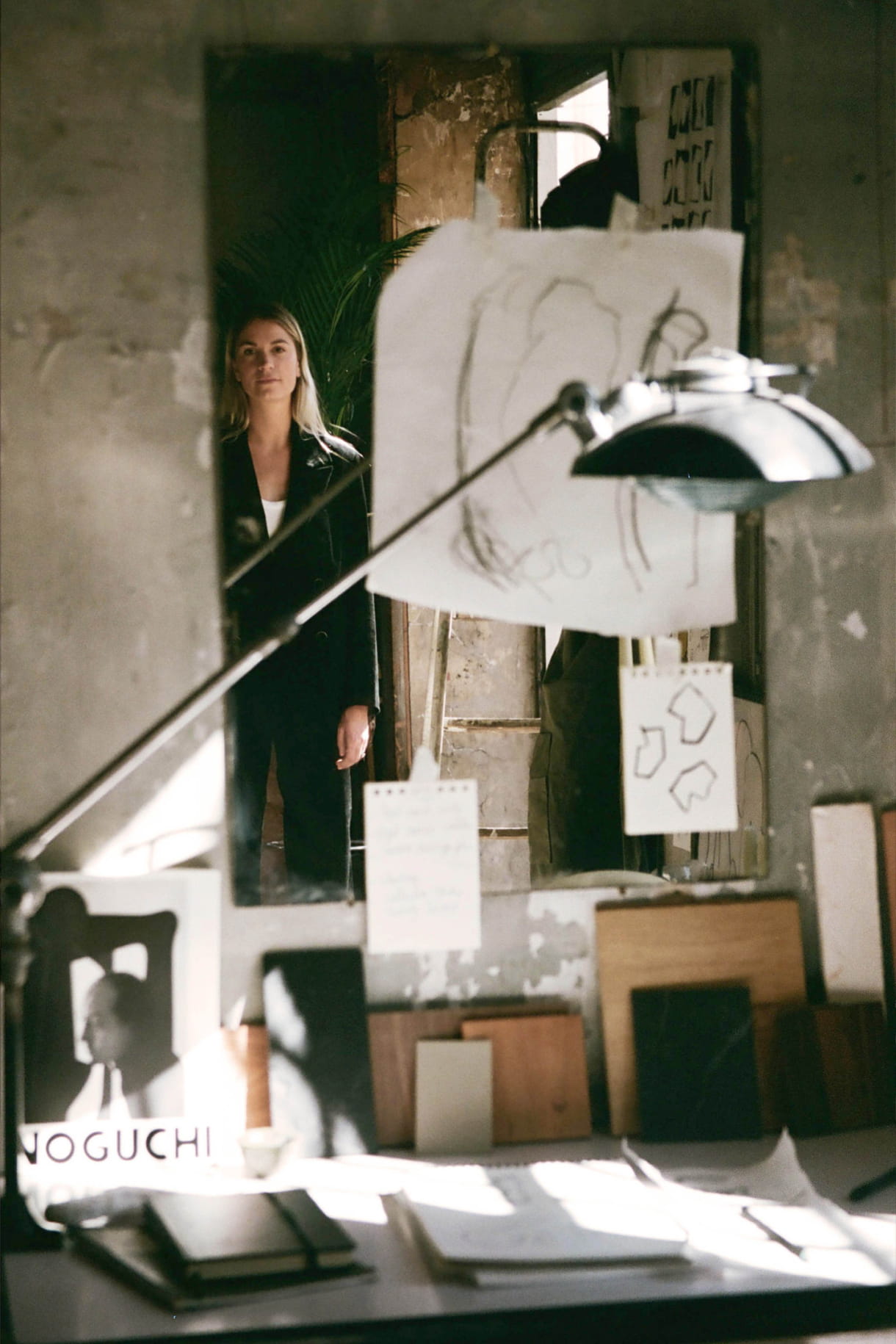
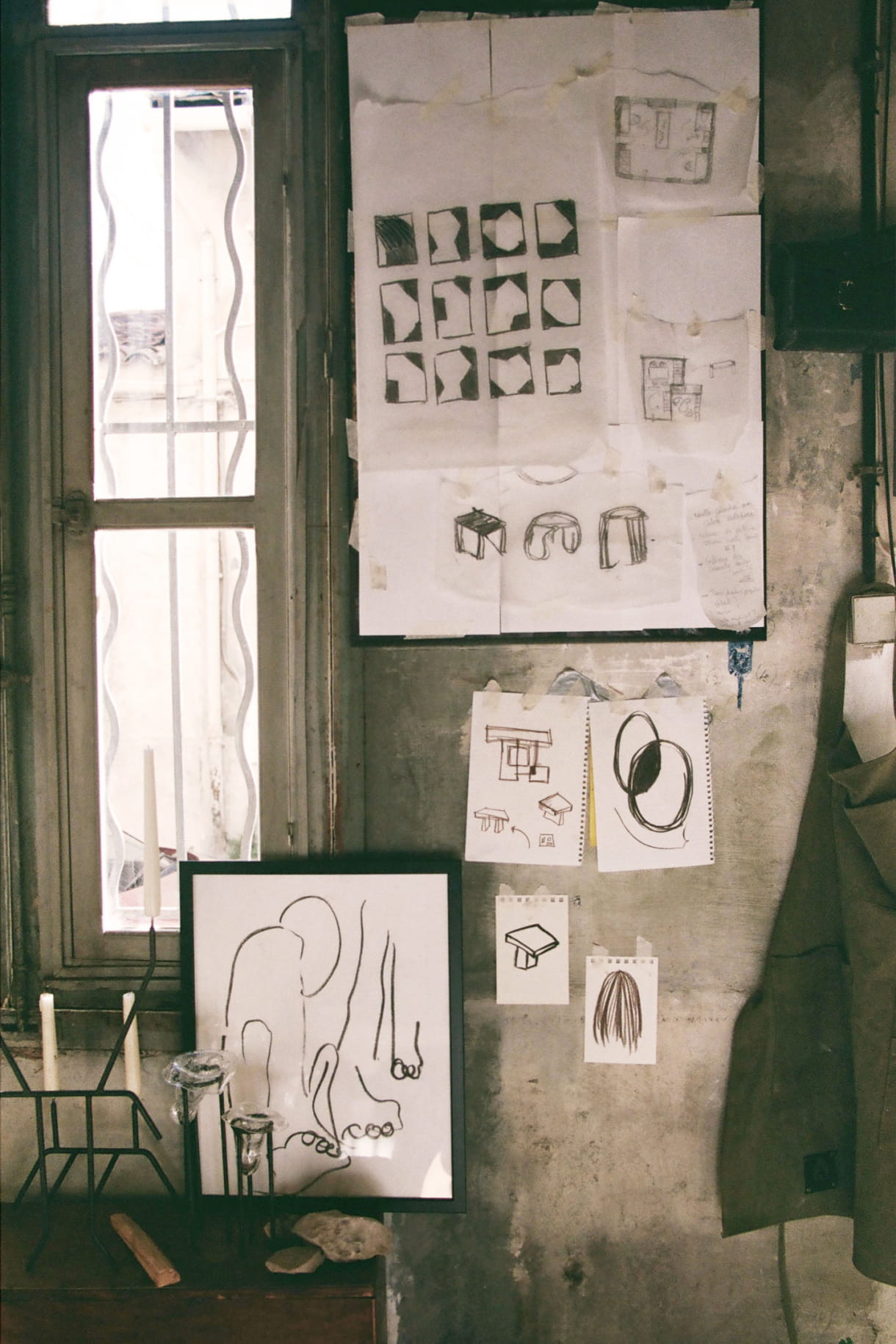
For the first edition of the Sessùn Craft Prize, you designed a cocoon made in natural materials. Can you tell us about this project?
La Récolte draws its inspiration from siestas in the shade of straw bales, after working in the field under the sweltering sun, reminiscent of paintings by Van Gogh and Millet. Its curved shape evokes the nest, the cocoon, the refuge that shelters and protects. Like the reed stubble of the Camargue, this vernacular microarchitecture revisits the use of straw. Its light, rounded structure provides a space of rejuvenating isolation. It is composed of several rows of plant "skirts", assembled together, and suspended from a wooden structure. With transmission and experimentation at the heart of La Récolte, this idea is in perfect line with Sessùn's approach, its commitment to know-how and its strong connection to craftsmanship.

ow did you go about creating the cocoon?
The project went extremely smoothly. We quickly found the right craftsmen for the job. Ekolinea, based near Arles, is a reed bed operator. For decades, the Perret family has constantly demonstrated a great deal of creativity and innovation in their use of Camargue reed. Given that the project evoked the roofs of Camargue houses, it was only natural to collaborate with craftsmen who had expertise in this field. The aim was to create a strong local dimension, and this commitment was respected. The project also involved a regular exchange with the entire Sessùn team and Nathalie Dewez from Massilia, who were invaluable in their kindness and support. It's a wonderful opportunity that Sessùn shares with artists. Every artist looks and hopes for a carte blanche.
What does Sessùn mean to you?
To me, Sessùn is about a shared dive into our childhood memories and embodies a genuine authenticity and a touch of poetry. It transcends its identity as a ready-to-wear brand to become a global project enriched by collaboration with other art forms. Sessùn cultivates this through giving a voice to artists and craftsmen. In three words, Sessùn is sunshine, freshness and sharing.
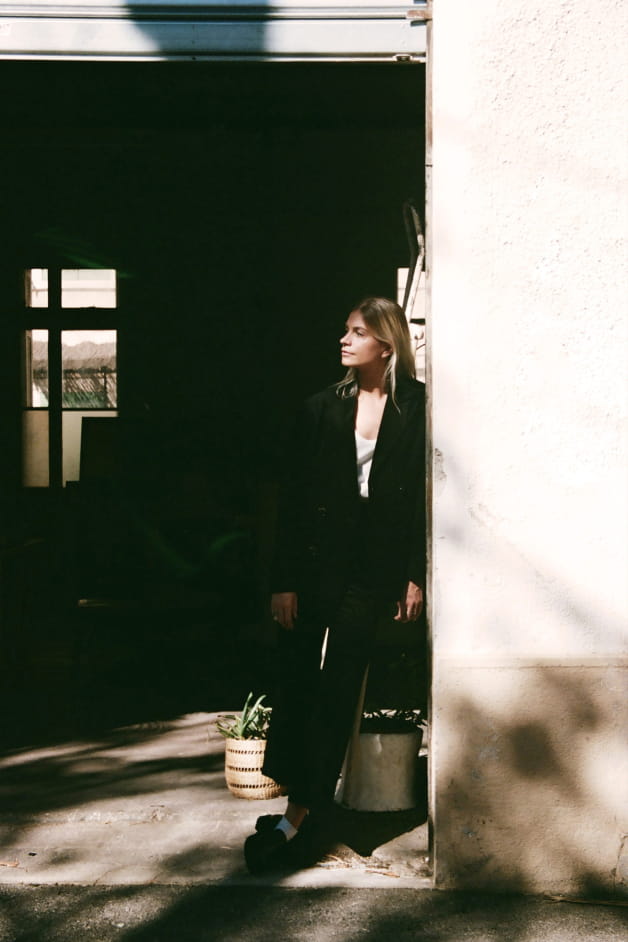
Check out Capucine Guhur's look

